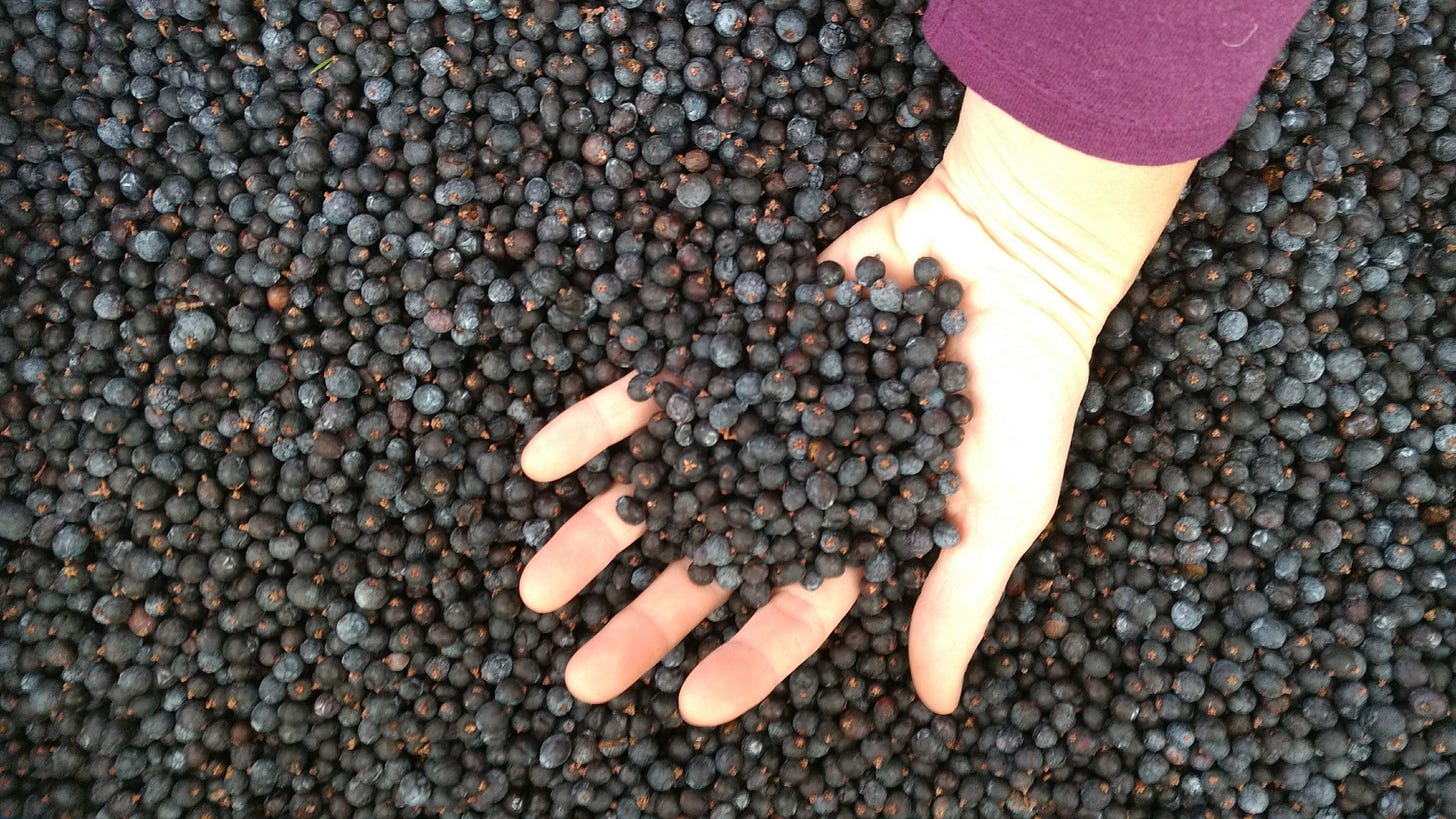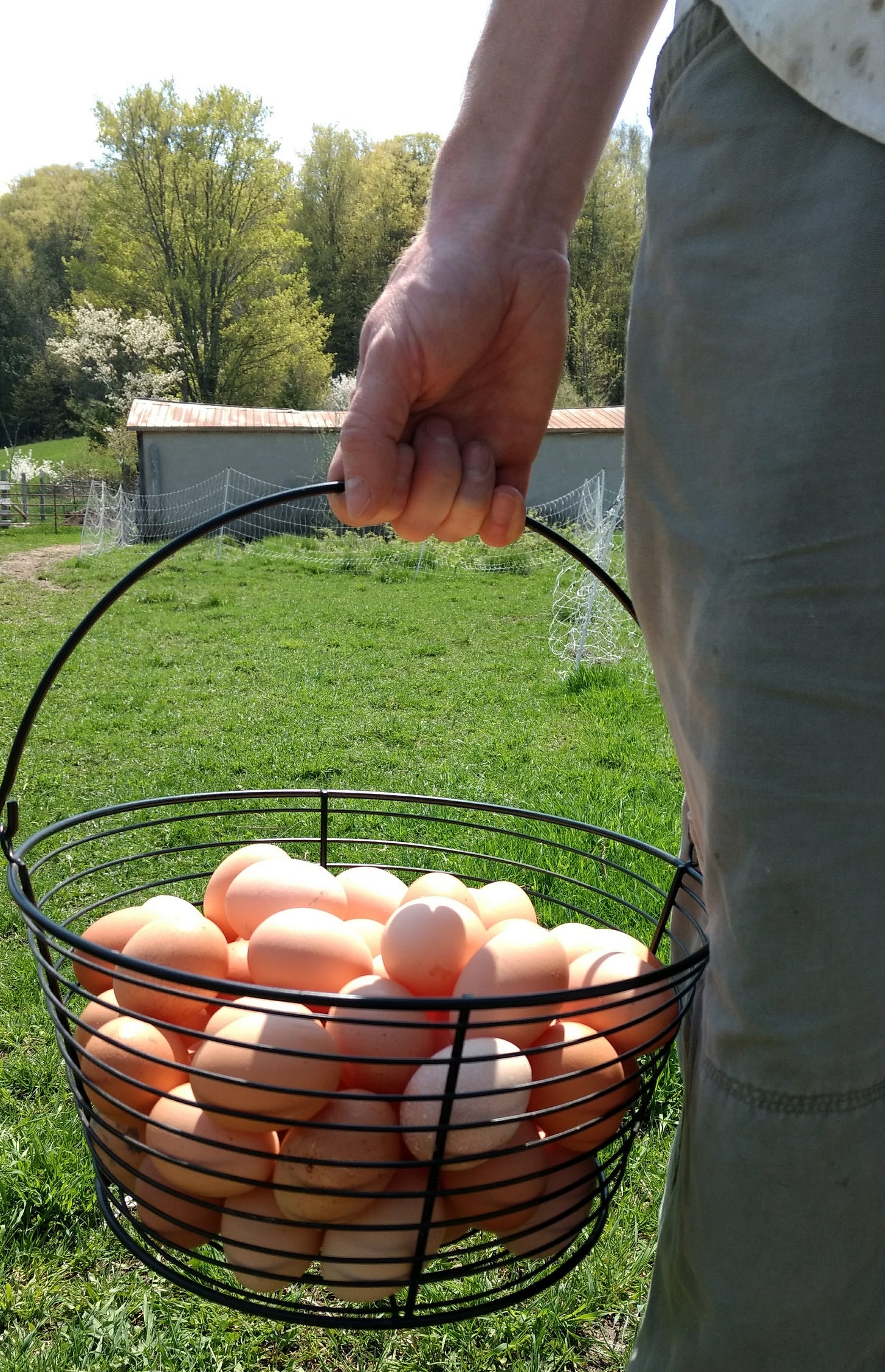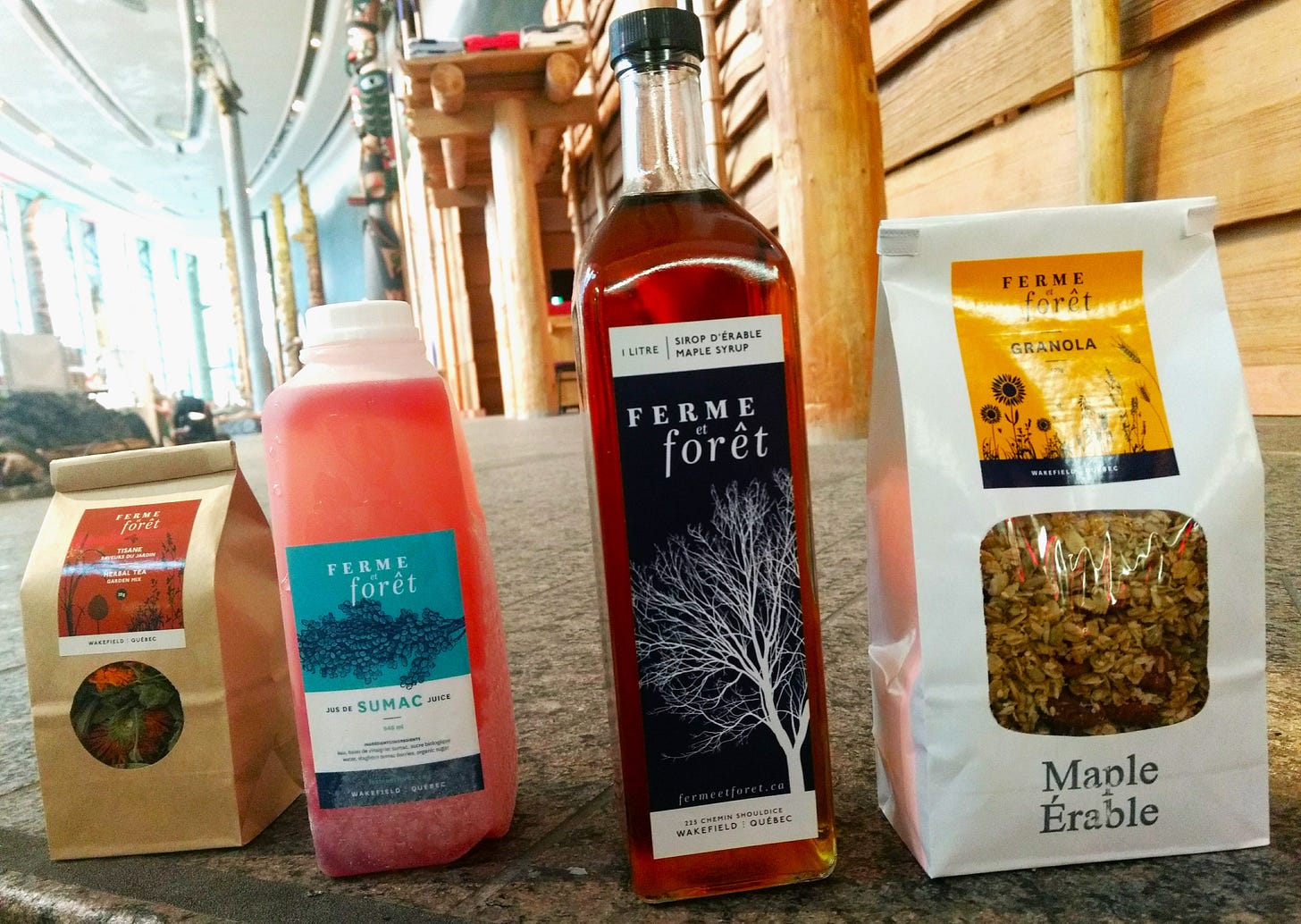If you missed it, you can read Part 1 here.
Another piece to the puzzle in our odd farm business model is prepared foods. I’ve always enjoyed cooking, and my first business was making a granola sweetened with honey, which I started nearly a decade before we started farming. When we started the farm, we added a maple-sweetened version of the granola and folded that business into the larger Ferme et Forêt “empire”. We also made maple pies, maple fudge, maple butter, toum, garlic scape pesto, fire cider, and elderberry syrup. This made certain business sense: when you produce a small amount of something (such as elderberries), it’s a good idea to value add, particularly when you can do that with something you have a lot of (adding maple syrup to the elderberries). The logic works the other way, too: when you have more of something than you can easily sell (like maple syrup), look for other things you can transform it into, in order to hopefully sell more of it. Having the ability to turn what you harvest into prepared foods also allows you to use produce you wouldn’t otherwise be able to sell (such as using cracked eggs in maple pies). An integrated farm is a less wasteful farm.
A major impediment to this side of the business is that we don’t have a commercial kitchen; we’ve always rented one off-farm. The inconvenience of that has led us to cut back on most of our prepared foods (granola excepted). We’ve been dreaming of building a kitchen on our farm for years, and it feels like we’re getting very close to moving forward with that, but it’s still too soon to make any official announcements. Once we have one, we’d like to lean in much more to prepared foods. Sap soda, anyone?
While I brought to the farm my training in permaculture, with its emphasis on perennials and fungi, Genevieve brought a background in wild foraging (perhaps we should have called our farm “Ferme et Fourrager”). She was brought up spending summer vacations with her uncle, who started the company Gourmet Sauvage, where he would harvest everything imaginable in the wild and turn them into various jams, mustards, pickles, and other delicacies. He was our mentor in the earlier years of our farm, teaching us how to gather dozens of plant species: everything from wild greens like bedstraw and nettle, to fruit like chokecherries and Canada plum, to others like spruce tips and daisy buds. We even waded into swamps to collect cattail hearts. For several years we had an intimate relationship with the milkweed plant. We harvested it at three different stages: the buds (for “milkweed broccoli”), the pods when they were young (for pickles), and the pods when they were full of fluff (we would fill our barn with bags of them and ship them off to a Quebec company that used the fibers for a variety of novel products). For awhile wild foods were trending in restaurants, and we caught that wave, but soon that passed. Then the milkweed company went bankrupt. After a few years, we realized most of what we were harvesting was too marginally profitable to continue with. These days, our wild harvesting is mostly paired down to just five of the most lucrative: Canada plums, our entire harvest of which goes to Gourmet Sauvage; juniper berries, which we sell exclusively to Distillerie du Square in Chelsea for their gin; sumac berries and wild-growing apples, which go entirely to our juices: and a mixture of wild herbs that go into several different tea blends.
Where Genevieve and I really come together is with the maple syrup. We both had experience with this prior to the farm, and it’s the production we work together the most on. Maple syrup is certainly the financial backbone of our business – typically around fifty percent of our net income. We couldn’t survive without it. It’s funny because, back in the age of sap buckets, maple syrup was never anything more than a marginal economic activity. But in the past few decades, the technology that has been brought to bear in the maple industry – namely tubing, vacuum pumps, and reverse osmosis – has changed the game, such that people can make their entire living from maple syrup. I’ve sometimes been tempted to ditch everything else we do and just focus on it – except that I’m too interested in all the other things we do and dream of doing.
There’s one other piece to the puzzle I haven’t mentioned: laying hens. They were actually our first foray into farming for a profit; we had barely unpacked our boxes after moving in before we bought a small flock off a neighbour. That flock soon grew to 100 (the maximum allowed under Quebec’s egg supply management system). And except for one winter we took off, we’ve stuck with them ever since. Why? It’s not that they make us a lot of money (a few thousand a year). It’s not that we love needing to tend to them 365 days a year. The business reason we tell ourselves is that they bring lots of people to our farmstand; they are by far the most popular item for sale there. While there, we hope people buy some syrup too. The manure we get from them is also useful, for the few things we grow. But I (it is all me who takes care of them) actually enjoy keeping them too. I first saw chickens on a volunteer project in Costa Rica when I was 19 years old, and have found them pleasing creatures ever since. I enjoy their evident enthusiasm for life, the way they burst out their coop door in the morning, eager to scratch up something yummy from the ground. I enjoy the funny sounds they make. And I enjoy their eggs – especially the dark orange yolked ones in the summer, when they’ve been eating bugs and plants outside all day. I find the daily chores of feeding, watering, opening and closing the coop, collecting and washing and packing the eggs, grounding. After 12 years of doing that, my days would feel lacking without it.
So that’s the current picture of our farm: a foundation of maple; granola and other prepared foods poised for growth; value-added wild harvesting and wholesale sales; a small amount of berries and asparagus; an increasing crop of mushrooms; some loss-leader eggs; and a future dream of a cidery.
Does this make us farmers? People who grow grass and graze animals on it are sometimes called farmers, but more accurately described as ranchers, pastoralists, or graziers. Maybe there needs to be a new word to describe what we do, with our mixture of wild harvesting, processing, animals, prepared foods, fungi, orcharding, and even the odd workshop. We, and other weirdos like us, are expanding the definition of what a financially viable farm can be. If you have any ideas for what that word could be, please drop them in the comments section below.
That’s it for Part 2. In Part 3, I’ll take a turn away from the descriptive and into the conceptual, and go into the principles that have guided us towards our farm model. And in addition to our principles, I’ll talk about how the land often tells us what it wants to grow, and how we try to tune into that.
Note: please excuse me if Part 3 is a while coming; we’ve started tapping the maple trees now, and if things warm up, we’ll soon be in the thick of our busiest season. I may not have time to write Part 3 for a little while. If so, we’ll see you on the other side!






